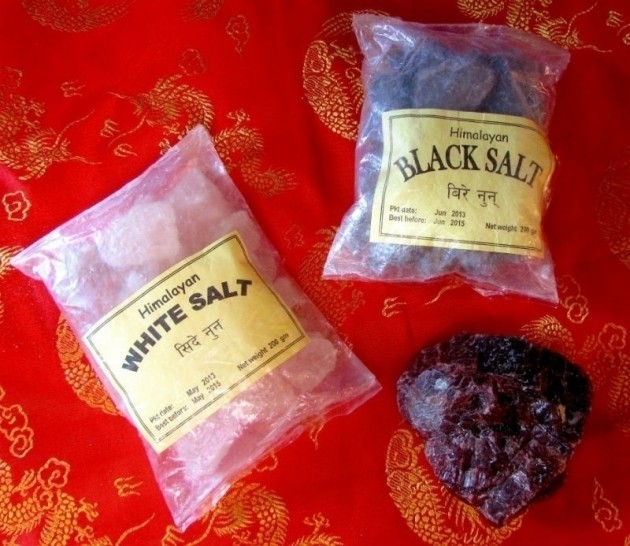Multiple sclerosis (MS) affects the central nervous system and usually occurs in early adult life. Normally, nerve fibers are surrounded by a layer of insulation called myelin. MS results when the nerve fibers of the central nervous system develop multiple patches of demyelination (removal of the myelin sheath). Nerve transmission is disrupted, leading to feelings of pins and needles in the hands and feet, numbness, loss of balance, clumsiness, sensitivity to heat and cold, blurred or double vision, and difficulty walking.
Patrick Kingsley, M.D., of Leicestershire, England, a specialist in nutrition and environmental medicine who has treated over two thousand multiple sclerosis patients, states that, "In advanced stages of MS, walking becomes more difficult, movements become more spastic, arms and hands may become weak, speech can become slurred, and chronic urinary urgency or incontinence may develop. Fatigue, one of the "silent" and most disabling symptoms of multiple sclerosis, may render even the smallest tasks difficult."
Dr. Kingsley adds, "Although the stereotype of an MS sufferer is that of a person in a wheelchair, many people with MS are able to walk and continue working. The disease can be benign, with a few minor attacks spread over many decades, or deterioration can be rapid. Most cases fall somewhere between these extremes."
Multiple sclerosis is often described as a relapsing/remitting disease, where attacks are followed by remission, leaving the MS sufferer worse off than he was before the exacerbation. Because no two cases of MS are identical, the severity of attacks and the state of health following a remission period differs from patient to patient. Unless steps are taken to slow or halt the disease, patients with will probably become progressively worse.
Etiology
The cause is idiopathic; though there are theories about autoimmunity, slow viruses, and myelinic enzymes, etc.;
no specific mechanism has been proven. Most cases begin between 20 and 40 years old, and rarely after 50. Females are affected slightly more than males. MS seems to be a disease of temperate latitudes, in either the Northern or Southern hemispheres, and is rarely seen in equatorial regions. The characteristic lesion in MS is one of patchy demyelination of the myelin sheaths in the CNS, particularly in the white matter.
Alternative medicine regards MS as a complex, multi-factorial disease involving several causes. When these
causes are addressed, the symptoms may be alleviated or even reversed.
Signs and Symptoms
The disease is much noted by its apparently random exacerbations and remissions. As the disease progresses, the remissions become less complete and permanent deficit is apparent.
Onset is almost always insidious. Symptoms are vague and the diagnosis is often missed in the early stages.
- Optic neuritis: Partial or total loss of vision in one eye with pain on moving that eye
- Diplopia and other visual disorders
- Tic doloureaux in a young person
- Ataxic gait
- Tingling or tightness in the extremities and the perception of a band across one's middle
- Bladder dysfunction: Urgency, hesitancy, etc
- Depression, apathy, lack of judgement, hysteria
- Increased deep reflexes, (+) Babinski
- Charcot's triad: In advanced disease: Nystagmus, intention tremor and scanning speech
- Others specific to the individual
Dietary and Nutritional Deficiencies
People with multiple sclerosis typically have nutritional deficiencies. Studies show that essential fatty acids, the building blocks of the brain and nervous system, are lacking in many MS patients. Multiple sclerosis is most common in Western countries where people consume large amounts of meats, dairy products, processed foods, and coconut and palm oils-all foods low in essential fatty acids, and is least common in countries where diets are high in unsaturated fats, including seed oils, olive oil, oily fish, fresh fruits, and vegetables-all foods high
in essential fatty acids. The connection with saturated fat intake was first noted in 1950 by Roy Swank, M.D., of
Oregon Health Sciences University in Portland, Oregon, and has been confirmed in more recent studies. Stephen Davies, B.M., B.Ch., who runs the Biolab Medical Unit in London, England, has found that even with a balanced diet, MS patients have difficulty absorbing essential nutrients. Although these differ from person to person, says Dr. Davies, the most common deficiencies are B1, B6, B12, magnesium, zinc, folic acid, amino acids, manganese, selenium, as well as essential fatty acids.
Food Sensitivities
Intolerance to certain foods is common in patients with multiple sclerosis. Among the most frequent are milk and dairy products, caffeine, tannin, yeast, sugar, fungi, wheat, gluten (found in wheat, barley, oats, and rye), corn, food additives, and fermented products such as ketchup, vinegar, and wine.
In a 1986 study it was found that of 135 MS patients, 65.9 percent had histories of sinusitis (inflammation of the sinus) a classic symptom of intolerance to milk and dairy products.
Candidiasis
Candidiasis, an overgrowth of the yeast Candida albicans, is a major cause of food intolerances and, like nutritional deficiencies, can add to the stress on individuals with multiple sclerosis. William G. Crook, M.D., of Jackson, Tennessee, first made the connection between MS and the yeast Candida albicans, documenting several cases
in which symptoms improved once the candida was treated.
- Follow Candida Relief Program
Environmental Toxins
Gary Oberg, M.D., past President of the American Academy of Environmental Medicine, notes several ways
in which environmental toxins may contribute to multiple sclerosis. "Toxins may cause metabolic poisoning, interrupting the body's normal metabolic pathways and damaging the myelin sheath of nerves, which is the basic defect in MS. Certain substances, while not toxic to everyone, may initiate an autoimmune reaction in susceptible individuals. These individuals make antibodies to the foreign substance which cross-react with myelin, thus damaging the nerves and inducing symptoms characteristic of multiple sclerosis." According to Dr. Oberg, some
of the substances that can produce or aggravate symptoms include chemicals in food and tap water, carbon monoxide, diesel fumes, fumes from domestic gas water heaters, solvents, aerosol sprays, and chipboard and foam in furniture and carpets. Dr. Oberg adds that MS symptoms may also be caused by internal toxins-toxins produced by bacteria and fungi in the gastrointestinal tract, including Candida albicans.
The Viral Connection
Medical researchers have long suspected a viral involvement in MS. Recent research on patients infected with the Epstein-Barr virus (a form of herpes virus believed to be the causative agent in infectious mononucleosis) shows that levels of essential fatty acids are very low after the illness, similar to the low levels found in MS patients. This virus interferes with the body's ability to metabolize essential fatty acids, causing a partial breakdown of the body's immune system. An acute episode of infection with the Epstein-Barr virus during adolescence could leave the door open to chronic illness such as MS some years later.
Toxicity from Mercury Dental Amalgams
Mercury is a highly toxic metal that, when used in dental amalgam fillings, can seep into body tissues where it accumulates and becomes capable of producing symptoms in the body that are indistinguishable from those of multiple sclerosis. According to Hal Huggins, D.D.S., of Colorado Springs, Colorado, mercury poisoning often remains undetected because patients' symptoms do not necessarily suggest mercury as the initiating cause, but the effects of mercury toxicity are potentially devastating. Mercury has been recognized as a poison since the 1500s, yet mercury amalgams have been used in dentistry since the 1820s. Mercury has been shown to bind to the DNA
of cells and cell membranes, causing cell distortion and inhibited cell function. When this happens the immune
system no longer recognizes the cell as part of the body and initiates an autoimmune reaction, destroying myelin
in the process. MS patients have been found to have over seven times the levels of mercury in their cerebrospinal fluid (the fluid that surrounds the brain and spinal cord) as compared to neurologically healthy patients.
Treating Multiple Sclerosis
An early diagnosis is an essential first step in treating multiple sclerosis. For the best rate of success, treatment of the disease should begin as soon as possible after diagnosis. Once the disability has gained a hold, it becomes harder to reverse the damage. "There is no question," says Dr. Swank, "at least in the minds of alternative physicians, that those MS patients who show the greatest improvement are the ones who start treatment earliest."
Many health care professionals believe that if treatment begins soon enough and is adhered to, it is possible to control multiple sclerosis in many, if not all, patients. Dr. Kingsley reasons that, "Cure is possible if the cause or causes can be found and then eliminated." Because multiple sclerosis affects each patient differently, treatment programs are individualized. Dietary and nutritional needs are to be addressed, as are food allergies and environmental toxins. Recommendations may be made for detoxification therapy, as well as for the removal of mercury amalgam dental fillings. Among practitioners of alternative medicine, there is a degree of consensus-not generally shared by conventional doctors-that multiple sclerosis can be controlled. This type of approach involves fundamental nutritional, environmental, and life-style changes.
Diet
The best documented success with multiple sclerosis patients is Dr. Swank's work with a low-saturated fat/high
polyunsaturated fat diet.
- Follow Modified Elimination Diet
Suggested Nutritional Supplementation
- UltraInflamX® Plus 360 - 2 scoops twice daily
Multi-mechanistic support with key nutrients, phytonutrients, and selective kinase response modulators
(SKRMs) to address underlying inflammation.
- Follow either the Modified Elimination Diet or the Anti-Inflammatory Diet
- LactoFlamXTM - 1 capsule daily
LactoFlamX features L. plantarum 299V - a strain-identified probiotic that has been specifically shown to
support the integrity and healthy function of the muscosal lining.
- EPA-DHA 6:1TM Enteric Coated - 2 softgels three times daily.
EPA-DHA 6:1 Enteric Coated omega 3 fatty acids providing a ratio appropriate for patients with chronic inflammatory conditions.
|
Vitamin D3 with Isoflavones. Iso D3 is designed to support optimal metabolism of vitamin D to its active
form.
- AdvaClear® - 2 capsules twice daily
AdvaClear provides unique support for balanced activity of the body's detoxification processes.
If there is a soy sensitivity use:
|
High potency vitamin D3 - the most bioactive form of supplemental vitamin D.
- Calcium AEP - 3-12 capsules daily depending on need
Dietary calcium supplement to support nervous system function
- GLA Forte® - 1 softgel twice daily with food
GLA Forte features borage seed oil, an essential fatty acid that is converted in the body to DGLA (dihomo- gamma-linolenic acid), the direct precursor of beneficial series 1 prostaglandins.
- Mag GlycinateTM - 2 tablets twice daily with food
Mag Glycinate, available exclusively from Metagenics, is a revolutionary, fully reacted amino acid chelate produced by a unique, patented process that is designed to enhance absorption and intestinal tolerance of magnesium.
- Azeo-PangenTM Extra Strength - 1-2 tablets with each meal.
Azeo-Pangen Extra Strength is a comprehensive enzyme complex that helps promote healthy digestive
function.
Dietary Suggestions
- Modified Elimination Diet
Attitude and Lifestyle Changes
Dr. Kingsley advises that "taking an active role in treatment should be the first concern of a person diagnosed with multiple sclerosis. This includes positive cooperation with the practitioner, as well as possible fundamental
life-style changes in work, relationships, and environmental conditions. Changes may be necessary to improve
a person's condition; it may be inadvisable, even impossible, to carry on as if nothing has happened."
Dr. Swank finds stress to be the second most important cause of MS after high fat diets. "Continuing stress, such
as from legal actions and family problems can cause MS," he says. Dr. Swank treats these patients to help them sleep and be more relaxed during the day. For mild stress he suggests taking a short rest in the afternoon, and
for more severe stress, he advises a rest mid-morning as well.
- TrancorTM - 2 capsules twice daily
Trancor is formulated to support a sense of tranquility in those who may feel worried or nervous by beneficially modulating the balance between the calming influence of GABA and the excitatory effects of glutamate.
- Serenagen - 2 tablets 2-3 times daily with lukewarm water in between meals.
Serenagen is a classic, comprehensive herbal stress management formula targeting individuals who are
"stressed and wired".
Physical Medicine Exercise: Many people with MS are more disabled than they need be. Gentle exercise will help keep someone with MS toned, supple, and mobile. Mild aerobic exercise in the open, cool air of morning or evening is recommended.
Manipulation: Gentle massage; spondylotherapy (concussion of T10, T11 to increase circulation to spinal cord);
check and align atlas, axis of spine (only adjust atlas 2-3 times, check parasympathetic [cervical, sacrum]).
Hydrotherapy: Constitutional hydrotherapy should be applied two to five times weekly. Crushed ice wrapped
in wet towels applied to spastic muscles for 10 minutes followed by exercise; cold (50° F) immersion of spastic extremity for 10 minutes followed by exercise.
Aromatherapy: Rub affected part with mixture of 95 percent olive oil and 5 percent essence of juniper or
rosemary.
Practical Hints: Avoid the use of electric heating pads, chlorinated water, as well as fluoridated water, toothpaste, and mouthwash.






